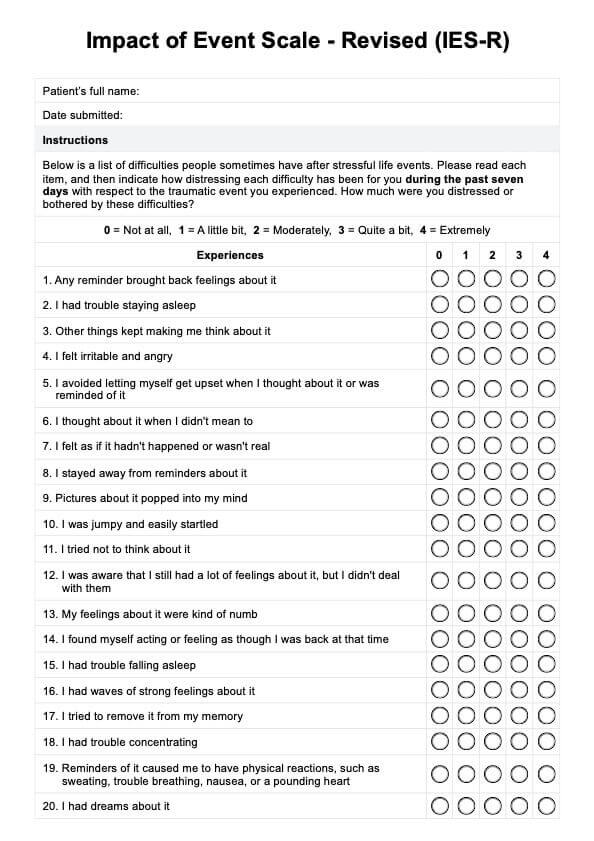No. It's a screening tool used in the diagnostic process. Professionals shouldn't use this as the sole tool for assessing patients with potential or confirmed posttraumatic stress disorder (PTSD).

Impact of Event Scale-Revised (IES-R)
Use the Impact of Event Scale-Revised (IES-R) to assess post-traumatic stress disorder symptoms in patients.
Use Template
Impact of Event Scale-Revised (IES-R) Template
Commonly asked questions
It can be accomplished by anyone within five to ten minutes.
Common treatments include medication such as anti-depressants and anti-anxiety medicine, cognitive behavioral therapy, stress inoculation training, and eye movement desensitization and reprocessing.
EHR and practice management software
Get started for free
*No credit card required
Free
$0/usd
Unlimited clients
Telehealth
1GB of storage
Client portal text
Automated billing and online payments











